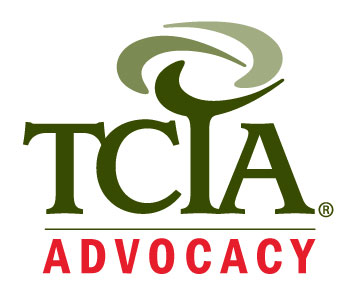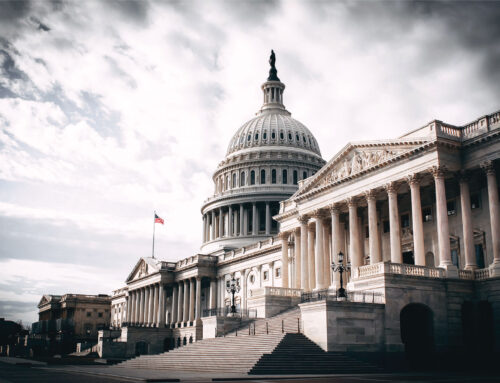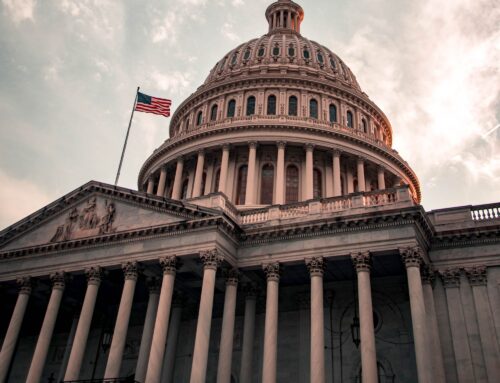On December 29, 2022, President Biden signed the Consolidated Appropriations Act of 2023 (the CAA) to fund the federal government through fiscal year 2023. The legislation is considered a “must-pass” bill and, as such, is often used as a vehicle to pass unrelated legislation that may not have the votes to move as a stand-alone measure in either chamber of Congress. The funding bill also includes appropriations riders that direct agencies to engage, or to refrain from engaging, in particular activities in order to receive appropriated funds. While the 4,000-page bill includes nearly $2 trillion in spending, certain provisions related to forest-service funding, immigration, retirement and worker protections may have important implications for tree care businesses.
Tree-centric provisions
Under the new law, the USDA Forest Service received a significant increase in program funding relevant to improving and maintaining community greenspace detailed within Division G, Title III. Specific increases from the FY 2022 funding include: the Urban and Community Forestry Programs (+ $4 million), Forest Health – Cooperative Lands Program (+$1 million), Landscape Scale Restoration Program (+3 million), Community Forests & Open Space Program (+$500,000), Research and Development Program (+$5 million) and Forest Inventory and Analyses Program (+$10 million). Notably, $2 million will be allocated for sudden oak death treatments and partnerships with states and private landowners.
Given the vital nature of the Animal and Plant Health Inspection Service (APHIS), Congress increased funding for the agency within Division A, Title I of the spending package. The new law increases funding for operations related to Tree and Wood Pests (+$1.345 million), Specialty Crops (+$6.54 million), Pest Detection (+$857,000) and Methods Development (+$1.34 million). Specifically, FY 2023 funds include $500,000 for spotted lanternfly control and eradication.
Additionally, the National Park Service received an additional $15 million for Outdoor Recreation Legacy Grants, bringing the grant funding from $110 million to $125 million from FY 2022.
Retirement reform
Attached to the funding bill is broad legislation that will have substantial impacts on retirement savings programs. Referred to as the SECURE 2.0 Act of 2022 within the CAA, the legislation reflects Congress’ reconciliation of three separate bills: the Securing a Strong Retirement Act of 2022, the RISE & SHINE Act and the EARN Act. Specifically, the SECURE 2.0 Act of 2022 provides retirement-plan holders increased contribution and withdrawal flexibility by gradually increasing the required minimum distribution (RMD) age, catch-up contribution limits and circumstances that allow penalty-free early withdrawals.
At the same time as providing individuals enhanced flexibility, the SECURE 2.0 Act of 2022 provides employers with increased incentives and opportunities to offer employees retirement plans. To promote worker saving, the new law allows employers, beginning in 2024, to create Emergency Savings Accounts within a defined contribution plan, and as of 2025, 401(k) and 403(b) plans must automatically enroll eligible employees. Additionally, the new law incentivizes businesses with up to 50 employees to establish a small-employer pension plan by making an increased percentage of administrative costs eligible for a tax credit, and by providing employers with a defined benefit plan and newly established small-employer pension plan, a per-employee credit based on employer contributions for five years.
Beginning in 2024, employers who do not offer retirement plans may establish a starter 401(k) plan, allowing employees to make contributions to the plan without employer contributions, and in doing so, providing employees an opportunity to save for retirement. To address part-time workers, starting in 2025, the law requires employers to allow employees working more than 500 hours a year for two consecutive years or 1,000 hours within a year to participate in an employer’s 401(k) plan. Check out the Senate Finance Committee summary at this link for more information.
H-2B visa program
In the lead-up to the bill’s passage, a number of different stakeholder groups worked to include a modest immigration reform package in the year-end spending bill. This included a conversation between organized labor and certain industry advocacy groups about addressing the shortcomings of the H-2B visa program by increasing the limit on H-2B visas from 66,000 to 125,000. However, that agreement, which purportedly exempted certain industries from the increase in the cap, did not end up being included in the final text.
Instead, the CAA consists of language that extends the authority of the Secretary of Homeland Security, in consultation with the Secretary of Labor, to supplement the number of H-2B visas permitted yearly by an additional 65,000 visas if it is determined there are not enough U.S. workers who are willing, qualified and able to perform the temporary work. In December 2022, the Secretary of Homeland Security utilized this authority to issue a temporary final rule, making available an additional 64,716 H-2B visas for FY 2023.
As the H-2B program is critical to the tree care industry’s ability to meet labor demands during peak work seasons, TCIA is supportive of this temporary relief and will continue to advocate for permanent H-2B cap relief and regulatory relief. To learn more about the recent H-2B supplemental visa announcement and topics TCIA advocates for, visit our advocacy website at https://advocacy.tcia.org/dhs-to-supplement-h-2b-cap-with-nearly-65000-additional-visas-for-fiscal-2023/.
Pregnant Workers Fairness Act
Additionally, Congress was able to agree on the inclusion of the Pregnant Workers Fairness Act in the Consolidated Appropriations Act of 2023. The provision requires employers to provide pregnant workers reasonable accommodations unless the entity can demonstrate that the accommodation would impose an undue hardship on the entity. The provision makes it unlawful to deny employment opportunities to a qualified employee if such denial is based on the need of the covered entity to make reasonable accommodations; require a qualified employee affected by pregnancy, childbirth or related medical conditions to accept an accommodation other than any reasonable accommodation; require a qualified employee to take paid or unpaid leave if reasonable accommodations can be provided; and take adverse action in terms, conditions or privileges of employment.
Throughout the consideration process, the Pregnant Workers Fairness Act was the subject of disagreement focused on the inclusion of a religious-exemption amendment. However, the exemption amendment supported by Republicans was included, as Democrats deemed the passage of the Act beneficial overall.
Steps forward
The FY2023 omnibus package addressed numerous programs impacting our industry and the American people. TCIA will continue to advocate for policies that benefit its membership and the industry. We look forward to keeping members up to date on regulations, workforce and industry matters throughout the year.



